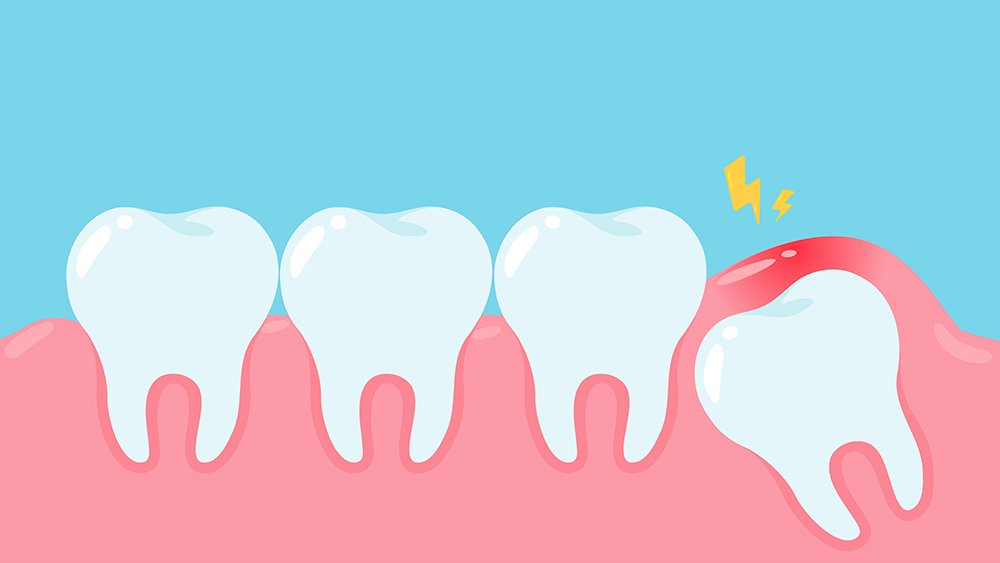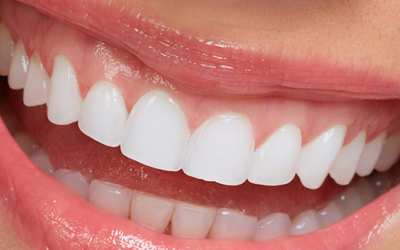What is a Wisdom Tooth? How About Wisdom Tooth Extraction?
Wisdom teeth are the last adult teeth to erupt. Wisdom teeth, which are the molars at the back of the jaw, generally do not adapt to the jaw structure, causing pain, abscess formation and discomfort in most individuals. For this reason, many wisdom teeth need to be removed by tooth extraction or dental surgery. These problems are caused by the lack of sufficient space in the jaw for the wisdom teeth to come out. In addition to the severe pain it causes, it can also cause deterioration of the jaw structure and adversely affect the health of other adjacent teeth. For this reason, it is beneficial to go through the control by consulting the dentists with the beginning of the wisdom teeth. In individuals with a suitable jaw structure, wisdom teeth do not need to be extracted. In some cases, wisdom teeth may remain embedded in the gingiva and may not be visible when viewed from the outside, as they erupt at the wrong angle due to improper jaw structure. These teeth, which are called impacted wisdom teeth, usually show themselves with the pain they cause. In order not to adversely affect the jaw and tooth structure, and to prevent undesirable problems such as abscesses, regular dental examinations should be performed. With a regular dental examination, the eruption and development of wisdom teeth can be followed, and in case of a negativity, the teeth can be extracted without harming the oral and dental health.
What is Wisdom Teeth And How Many?
Tooth development begins with the deciduous teeth, which are completed between the ages of 6 months and 3 years in infancy, 10 at the bottom and 10 at the top, in total 20. Then, starting from the age of 9-10, the milk teeth gradually fall out and leave their place to adult teeth. Of the adult teeth (main teeth), which should be 32 in total, 28 are completed during childhood and early adolescence. The remaining 4 molars are the wisdom teeth in the back of the upper and lower jaws. As the name suggests, these teeth, which erupt around the age of 20, usually cannot come out in a healthy way. It can remain embedded or semi-buried, or it can bring many negative consequences such as compression of the oral cavity due to insufficient space, damage to other teeth, and pain. These teeth do not cause any problems in individuals with a suitable jaw structure and sufficient exit space behind the molars for wisdom teeth. However, the wisdom teeth, which are located far behind and in a difficult to reach position, may not be cleaned adequately even in individuals who regularly perform oral and dental care. For such reasons, in some cases, wisdom teeth may need to be removed or surgically removed if they are impacted.
At What Age Do Wisdom Teeth Begin to Erupt?
Wisdom teeth do not have to erupt at the age of 20, although they are named that way. These teeth, which are 4 in total, usually erupt between the ages of 17-25. Even if it doesn’t come out in this age range, it doesn’t mean you don’t have teeth. Wisdom teeth may not be noticed if they do not cause pain in the person because they are often impacted. In this case, the condition of impacted teeth can only be seen in x-ray examinations performed at dentist controls. Individuals between the ages of 17-25 should apply to their dentists if they feel pain in the area where the wisdom teeth will come out or if they have an abnormal appearance.
What Are the Symptoms of Wisdom Teeth?
Wisdom teeth, which can find enough space in the gums and come out as they should, develop in a healthy way and do not cause any signs of discomfort. However, most people’s wisdom teeth cause problems due to the lack of this area. Common symptoms during eruption or impaction of wisdom teeth include:
- Pain in teeth and gums,
- Gum sensitivity,
- Pain in the jaw and ear,
- Swelling in lymph nodes,
- Headache,
- Bad smell in the mouth,
- Feeling pain while chewing
The majority of such symptoms in individuals aged 17-25 are caused by the wisdom teeth and the complications caused by these teeth. Therefore, individuals experiencing these complaints should apply to dentists.
How to Understand the Impacted Wisdom Teeth?
A dental x-ray is usually taken during the oral and dental examination in individuals with wisdom tooth pain and other symptoms. This X-ray provides clear images of bone structures, angles and impacted teeth along with the roots of all teeth. Wisdom teeth that are not visible from the outside, are horizontally protruding or are semi-impacted can be examined on x-ray. If the teeth that need to be extracted are detected during the X-ray examination, it can be decided whether they should be removed as an ordinary tooth extraction or surgical operation. Some impacted teeth may cause conditions such as infection and cyst formation. In such a situation, it may be necessary to apply drug treatments for them before making an appointment for tooth extraction.
How To Extract Wisdom Teeth?
Impacted, semi-impacted or cramped teeth can also cause different oral and dental problems such as inflammation of the surrounding gum tissue (pericoronitis), bad breath and dental caries due to nutrient accumulation, tissue loss (resorption) in the roots and enamel of neighboring teeth. For this reason, in addition to semi-impacted and impacted teeth, wisdom teeth that cause congestion in the mouth should be extracted, although they come out at a correct angle. How to extract a wisdom tooth can be drawn by looking at the X-ray images. Wisdom teeth that have come out at the right angle and need to be extracted due to problems such as congestion or caries can be extracted just like in other tooth extractions. In this case, no surgical operation is required. However, very few of the problematic wisdom teeth can be extracted in this way. A larger part of it has to be removed with the help of surgical interventions called wisdom tooth surgery.
How is Wisdom Tooth Surgery Done?
How the wisdom tooth surgery will be performed is decided entirely according to the position of the tooth seen in the X-ray images. In cases where the wisdom tooth is located in the gingiva and the tooth roots are embedded in the jawbone, it is usually not possible to remove the tooth in one piece. In these cases, the wisdom tooth to be extracted is divided into several parts and extracted in this way. Another method is to open an incision in the gum so that the tooth can be extracted. With the help of this incision, the tooth can be extracted much more easily. After tooth extraction and cleaning of the area, the gum is stitched. These sutures should be removed after a certain period of time after the operation. Such surgical procedures fall under the expertise of oral and maxillofacial surgeons. The duration of the operation performed under local anesthesia may differ depending on the position of the tooth and the number of teeth to be extracted. It is normal for individuals who have had wisdom tooth surgery to have blood leakage in the surgical area for a certain period of time. In order to ensure coagulation in the operation area, food should not be eaten and water should not be drunk during the period recommended by the physician. Swelling may occur in the area after the operation, and severe pain may develop as the effect of anesthesia wears off. In this case, it is beneficial to use painkillers prescribed by the physician. The area where the tooth was extracted should not be touched by hand or tongue, the other side of the mouth should be used while eating. Smoking should also be avoided during the first 24 hours as it will increase bleeding. Ice compresses can be used to relieve swelling.
If you are experiencing similar problems with wisdom toothache, you can go through the examination by applying to your dentist. By ensuring that your problematic wisdom teeth are removed on time, you can prevent damage to your other teeth and protect your oral and dental health.




